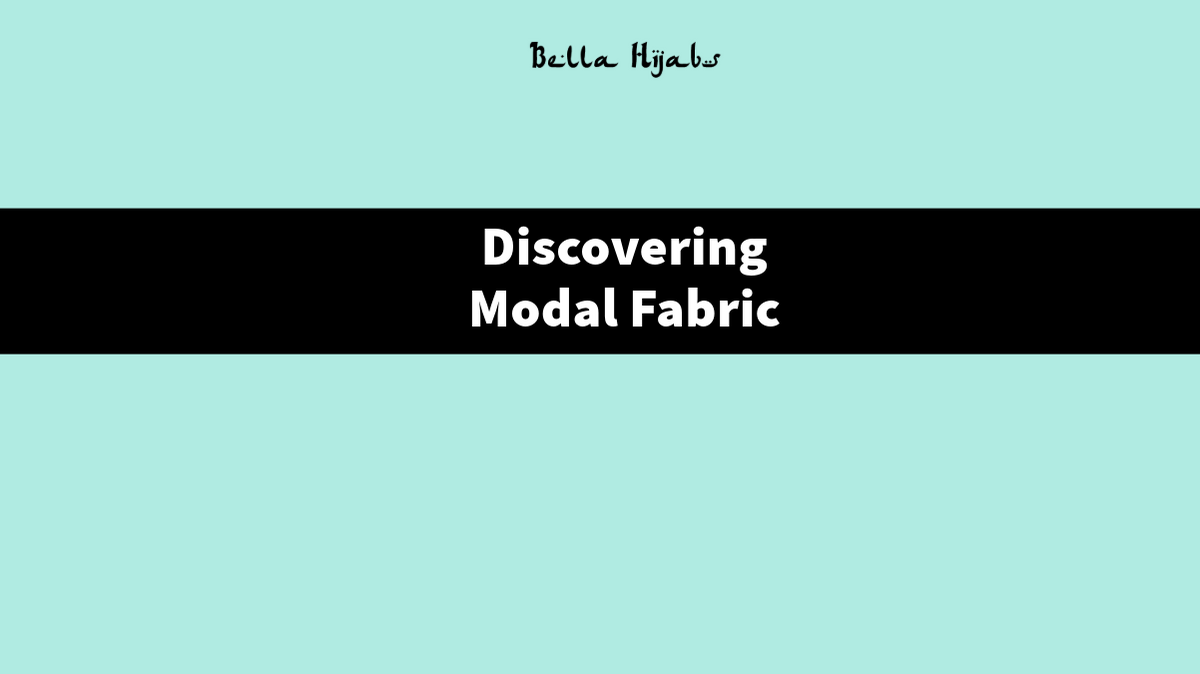
A Closer Look at Comfort and Sustainability
In the world of textiles, innovations are continually reshaping the way we think about comfort, durability, and sustainability. One such innovation is Modal fabric, celebrated for its luxurious feel, eco-friendly properties, and versatile applications. Join us as we delve into what makes Modal fabric unique, its components, and the process of crafting products like a Modal hijab.
What is Modal Fabric?
Modal fabric is a type of rayon textile made from the fibers of beech trees, specifically the European beechwood. It falls under the category of regenerated cellulose fibers, similar to viscose and lyocell (Tencel). What sets Modal apart is its exceptionally soft texture, often described as silky smooth with a luxurious drape. This fabric is renowned for its breathability, moisture-wicking properties, and resistance to shrinking and fading, making it a popular choice for clothing and accessories.
Components of Modal Fabric
Modal fabric is derived from cellulose, a natural compound found in the cell walls of plants. The process involves:
1. Extraction of Cellulose: Beech trees undergo a harvesting process where wood chips are extracted from sustainable forests.
2. Production of Cellulose Fiber: The wood chips are processed to extract cellulose, which is then dissolved in a chemical solution to create a viscous pulp.
3. Spinning into Yarn: The pulp is extruded through spinnerets to form fibers, which are then spun into yarn and woven or knit into fabric.
Advantages of Modal Fabric
- Softness: Modal fabric is exceptionally soft and smooth, making it comfortable against the skin.
- Breathability: It is highly breathable and absorbs moisture well, keeping the wearer cool and dry.
- Durability: Modal fibers are strong and resilient, retaining their shape and color wash after wash.
- Sustainability: Modal production typically uses less land and water compared to cotton, and the wood used comes from sustainably managed forests.
- Shine: Modal fabric, because of its natural fibers, give a slight shine or have a sheen to it - giving the fabric a high quality look and feel.
Crafting a Modal Hijab
1. Design: The design process begins with choosing the color, pattern, and dimensions of the hijab, ensuring it meets both aesthetic and functional requirements.
2. Fabric Selection: Modal fabric is selected for its softness, drape, and ability to retain vibrant colors, which are crucial for hijabs.
3. Cutting and Sewing: The fabric is carefully cut according to the desired dimensions of the hijab, and then sewn together with precision to create seamless edges.
4. Finishing Touches: Any additional embellishments or details are added, such as embroidery or decorative borders, depending on the design.
A Sustainable Choice
Choosing a Modal hijab not only offers comfort and elegance but also aligns with sustainable fashion practices. By opting for textiles like Modal, which are derived from renewable resources and produced with minimal environmental impact, we contribute to a more eco-conscious wardrobe.
Join the Modal Movement
We are passionate about offering products that blend style with sustainability. Our Modal hijabs exemplify our commitment to quality craftsmanship and responsible sourcing. Discover the difference of Modal fabric today and embrace a wardrobe that feels good inside and out. Shop our Modal Hijabs here.

